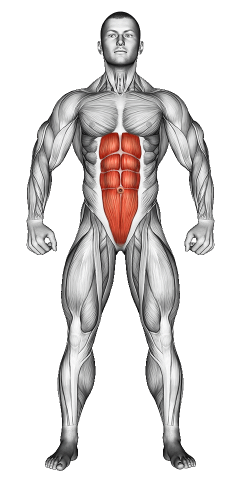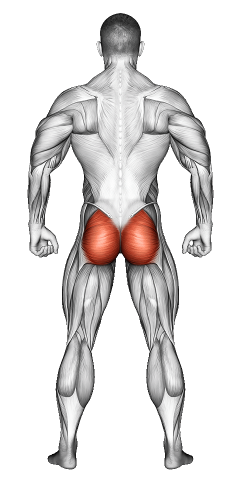Bird Dog: Video Tutorial & Exercise Guide

Written By: Claude Michael
Updated: Oct 13, 2024
| Workout | Bird Dog |
| Primary Muscle Group | Abs |
| Secondary Muscle Group | Glutes |
| Equipment Required | Bodyweight |
| Force Type | N/A |
| Mechanics | Isolation |
| Exercise Type | Strength |
| Difficulty | Intermediate |
Bird Dog: Video Tutorial & Exercise Guide
Secondary Muscles Group
Bird Dog: Step-by-Step Guide
- Step 1: Start on all fours in a tabletop position, with your wrists directly under your shoulders and your knees under your hips. Keep your back flat and engage your core.
- Step 2: Extend your right arm straight forward while simultaneously extending your left leg straight behind you. Keep both your arm and leg parallel to the ground, creating a straight line from hand to foot.
- Step 3: Hold this position for a moment, focusing on keeping your core tight and your body stable.
- Step 4: Slowly return your arm and leg to the starting position, maintaining control throughout.
- Step 5: Repeat on the opposite side, extending your left arm and right leg. Continue alternating sides for the desired number of reps.
Bird Dog: Overview
The Bird Dog is a core-stabilizing exercise that targets the abdominals, lower back, and glutes. It's great for improving balance, coordination, and stability while strengthening the muscles that support your spine. This exercise is often used in physical therapy for injury prevention and rehabilitation, making it a perfect addition to your core routine.
Bird Dog: Benefits
Bird Dog exercises help strengthen the core, back, and glutes while improving balance and stability. They are particularly effective for developing spinal alignment and core endurance, which are essential for maintaining good posture and preventing lower back pain. Additionally, Bird Dog engages multiple muscle groups at once, making it an efficient full-body exercise.
Bird Dog: Pro Tips & Advanced Techniques
To maximize the benefits of Bird Dog, focus on slow and controlled movements. Engage your core to prevent your lower back from sagging, and keep your hips level throughout the movement. If you're looking to increase the challenge, try holding the extended position for a longer period or adding ankle or wrist weights for extra resistance.
Bird Dog: Progression Plan
Beginner
Intermediate
Advanced
Bird Dog: Frequently Asked Questions (FAQs)
What muscles does the Bird Dog target?
+Bird Dog primarily targets the core, lower back, and glutes. It also engages the shoulders and hips for stability.
Can beginners do Bird Dog exercises?
+Yes, Bird Dog is a great exercise for beginners as it can be done without any equipment. Start slowly and focus on maintaining balance and control.
How can I make Bird Dog more challenging?
+You can increase the difficulty by holding the extended position for longer, adding ankle or wrist weights, or performing the exercise on an unstable surface like a Bosu ball.
How often should I do Bird Dog exercises?
+You can incorporate Bird Dog into your core routine 2-3 times a week, or use it as part of your warm-up or cool-down for full-body workouts.
What common mistakes should I avoid?
+Avoid letting your lower back arch or hips rotate during the movement. Keep your core engaged and your spine neutral for proper form.
Share
Don’t Wish for It, Work for It – Join the FlexXP Newsletter Today!
Thank you for signing up for the FlexXP Newsletter!
This site is protected and the Google Privacy Policy and Terms of Service apply.

